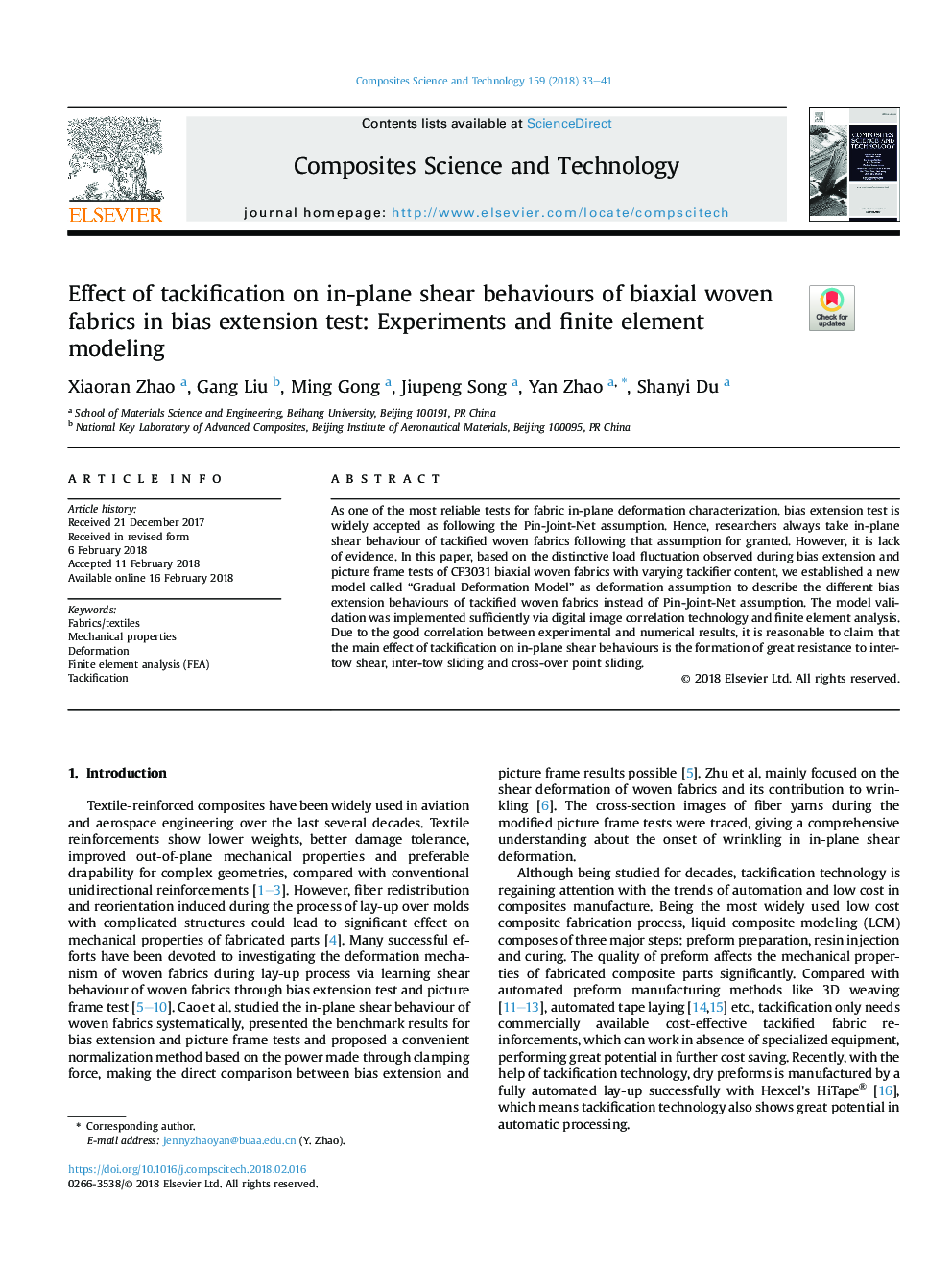| Article ID | Journal | Published Year | Pages | File Type |
|---|---|---|---|---|
| 7214526 | Composites Science and Technology | 2018 | 9 Pages |
Abstract
As one of the most reliable tests for fabric in-plane deformation characterization, bias extension test is widely accepted as following the Pin-Joint-Net assumption. Hence, researchers always take in-plane shear behaviour of tackified woven fabrics following that assumption for granted. However, it is lack of evidence. In this paper, based on the distinctive load fluctuation observed during bias extension and picture frame tests of CF3031 biaxial woven fabrics with varying tackifier content, we established a new model called “Gradual Deformation Model” as deformation assumption to describe the different bias extension behaviours of tackified woven fabrics instead of Pin-Joint-Net assumption. The model validation was implemented sufficiently via digital image correlation technology and finite element analysis. Due to the good correlation between experimental and numerical results, it is reasonable to claim that the main effect of tackification on in-plane shear behaviours is the formation of great resistance to inter-tow shear, inter-tow sliding and cross-over point sliding.
Related Topics
Physical Sciences and Engineering
Engineering
Engineering (General)
Authors
Xiaoran Zhao, Gang Liu, Ming Gong, Jiupeng Song, Yan Zhao, Shanyi Du,
